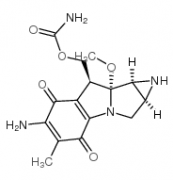C15H18N4O5

1. 性状:蓝紫色有光泽结晶或结晶性粉末,无臭。固体稳定,但在酸性和碱性溶液中易失活
2. 密度(g/mL,25/4℃):不确定
3. 相对蒸汽密度(g/mL,空气=1):不确定
4. 熔点(ºC):>360
5. 沸点(ºC,常压):不确定
6. 沸点(ºC, 5.2 kPa):不确定
7. 折射率:不确定
8. 闪点(ºC):不确定
9. 比旋光度(º):不确定
10. 自燃点或引燃温度(ºC):不确定
11. 蒸气压(kPa,25 ºC):不确定
12. 饱和蒸气压(kPa,60 ºC):不确定
13. 燃烧热(KJ/mol):不确定
14. 临界温度(ºC):不确定
15. 临界压力(KPa):不确定
16. 油水(辛醇/水)分配系数的对数值:不确定
17. 爆炸上限(%,V/V):不确定
18. 爆炸下限(%,V/V):不确定
19. 溶解性:本品溶于水(H2O: 4mL/vial Stock solutions should be filter sterilized and stored at 2-8 °C in the dark., clear to slightly hazy, blue to purple)、甲醇、丙酮和乙酸乙酯等有机溶剂,微溶于苯、乙醚和四氯化碳,不溶于石油醚
1. 性状:蓝紫色有光泽结晶或结晶性粉末,无臭。固体稳定,但在酸性和碱性溶液中易失活
2. 密度(g/mL,25/4℃):不确定
3. 相对蒸汽密度(g/mL,空气=1):不确定
4. 熔点(ºC):>360
5. 沸点(ºC,常压):不确定
6. 沸点(ºC, 5.2 kPa):不确定
7. 折射率:不确定
8. 闪点(ºC):不确定
9. 比旋光度(º):不确定
10. 自燃点或引燃温度(ºC):不确定
11. 蒸气压(kPa,25 ºC):不确定
12. 饱和蒸气压(kPa,60 ºC):不确定
13. 燃烧热(KJ/mol):不确定
14. 临界温度(ºC):不确定
15. 临界压力(KPa):不确定
16. 油水(辛醇/水)分配系数的对数值:不确定
17. 爆炸上限(%,V/V):不确定
18. 爆炸下限(%,V/V):不确定
19. 溶解性:本品溶于水(H2O: 4mL/vial Stock solutions should be filter sterilized and stored at 2-8 °C in the dark., clear to slightly hazy, blue to purple)、甲醇、丙酮和乙酸乙酯等有机溶剂,微溶于苯、乙醚和四氯化碳,不溶于石油醚
| Name: | Mitomycin C (Contains 2mg Mitomycin C and 48mg Sodium Chloride) Material Safety Data Sheet |
| Synonym: | Ametycine |
| CAS: | 50-07-7 |
| CAS# | Chemical Name | content | EINECS# |
| 50-07-7 | Mitomycin C | 4 | 200-008-6 |
1、 摩尔折射率:80.79
2、 摩尔体积(cm3/mol):213.6
3、 等张比容(90.2K):633.5
4、 表面张力(dyne/cm):77.2
5、 极化率(10-24cm3):32.02
1、 疏水参数计算参考值(XlogP):-0.4
2、 氢键供体数量:3
3、 氢键受体数量:8
4、 可旋转化学键数量:4
5、 互变异构体数量:42
6、 拓扑分子极性表面积(TPSA):147
7、 重原子数量:24
8、 表面电荷:0
9、 复杂度:757
10、同位素原子数量:0
11、确定原子立构中心数量:4
12、不确定原子立构中心数量:0
13、确定化学键立构中心数量:0
14、不确定化学键立构中心数量:0
15、共价键单元数量:1